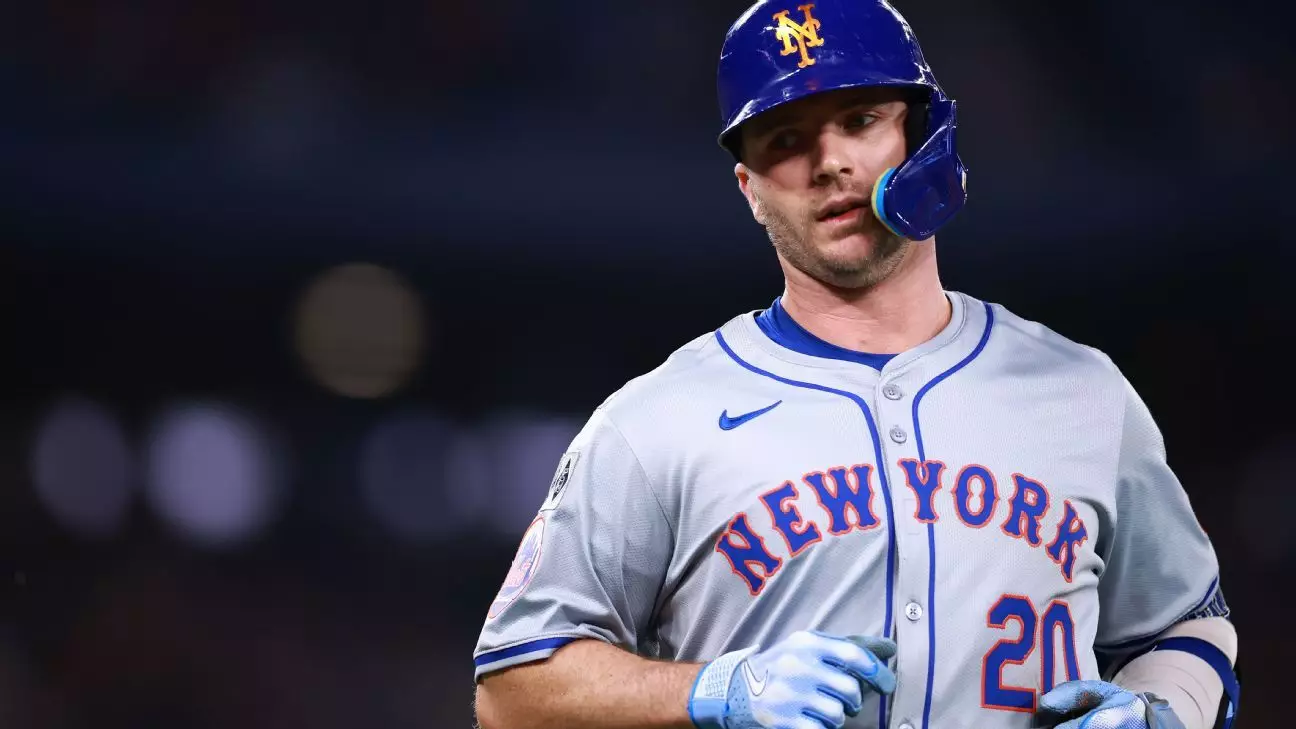As the baseball landscape continues to shift following significant transactions and contracts, the recent focus has been on the New York Mets and their strategic direction under the helm of David Stearns. While the baseball world buzzes about Juan Soto’s record contract, the Mets find themselves at a crossroads, scrutinizing their roster decisions and aligning their operational strategies for the upcoming season. Stearns, the architect of the organization’s baseball operations, was notably reserved during a recent media engagement, emphasizing diplomacy in discussing the team’s prospects and free-agent acquisitions.
Stearns’ approach reflects a broader organizational philosophy—one that balances the expectation of immediate performance with a long-term vision. Despite the excitement surrounding Soto, Stearns’ emphasis is purposefully directed at solidifying key roster positions before the upcoming season’s commencement.
At the center of these discussions is first baseman Pete Alonso. A critical figure in the Mets’ recent successes, Alonso’s history with the team has been marked by impressive accomplishments, earning him a place as both a fan favorite and a managerial consideration. His accolades are undeniable; since his debut in 2019, he has belted 216 home runs, solidifying his status as one of the league’s premier power hitters. However, potential concerns linger regarding Alonso’s defense and a noticeable regression in his offensive output over the last three seasons.
Stearns expressed a desire to retain Alonso, recognizing the player’s contributions to the team’s success. However, the question remains: can the Mets continue to invest in a player whose performance metrics show signs of slippage? This dilemma underscores a tension within the franchise—a need to honor homegrown talent while also making astute decisions to ensure the team remains competitive.
In contemplating future roster moves, Stearns has hinted at various options to address the first base position should Alonso depart. One potential solution could lie in transitioning Mark Vientos from third base to first. Vientos, hailed as a breakout star, could provide a fresh dimension if Alonso is not re-signed. Nevertheless, Stearns maintained that he still views Vientos as an integral part of the third base strategy, demonstrating a commitment to a more traditional positional approach despite the evolving dynamics of modern baseball.
The offseason has already seen notable changes, including the loss of pitcher Luis Severino to the A’s and the acquisition of outfielder Jose Siri. The signings of Frankie Montas and Clay Holmes signal a willingness to bolster the pitching staff. However, Stearns articulated a nuanced approach to additional acquisitions, suggesting flexibility while maintaining a conservative outlook, avoiding unnecessary expenditures.
The current free-agent market presents a myriad of opportunities for the Mets, with notable pitchers like Corbin Burnes, Max Fried, Jack Flaherty, and Walker Buehler vying for contracts. Additionally, the posting of Japanese sensation Roki Sasaki introduces another layer of complexity into the offseason discussions. The Mets could strategically leverage these opportunities to build a more robust pitching rotation, a crucial aspect in their quest for postseason success.
Stearns acknowledged the potential for adding one more starter but emphasized that it is not mandatory. Such a stance suggests an awareness of balancing immediate needs while fostering organizational depth. In addition to Montas and Holmes, the Mets’ current rotation options include promising names looking to step into more significant roles, including David Peterson and Tylor Megill.
As the Mets navigate this pivotal offseason, much will depend on their ability to forge a path that harmonizes tradition with modern strategic innovations. The choices made regarding Alonso, their pitching staff, and other potential acquisitions will shape the franchise’s future trajectory. Through the lens of both operational restraint and ambitious aspirations, Stearns’ management will undoubtedly be scrutinized as the franchise seeks to emerge as a formidable presence in Major League Baseball once again. Each decision will resonate not only in the short term but also within the fabric of the Mets’ legacy—a careful dance between honoring past successes and innovating for future triumphs.

